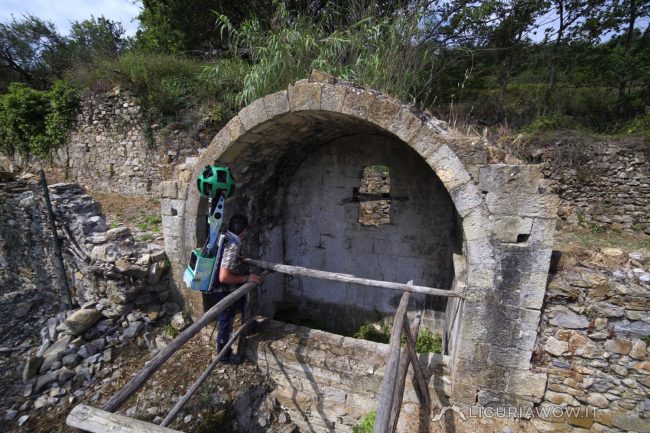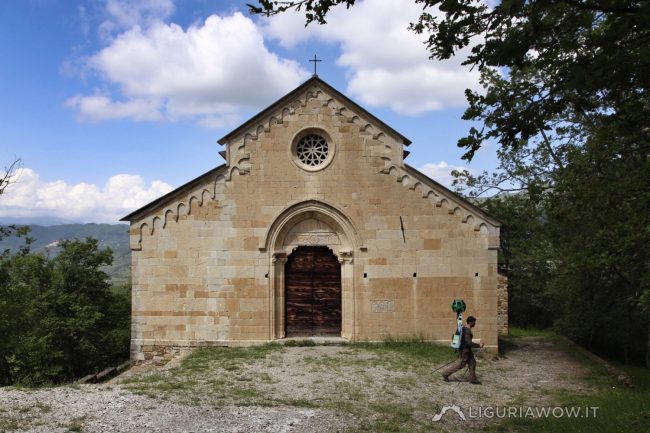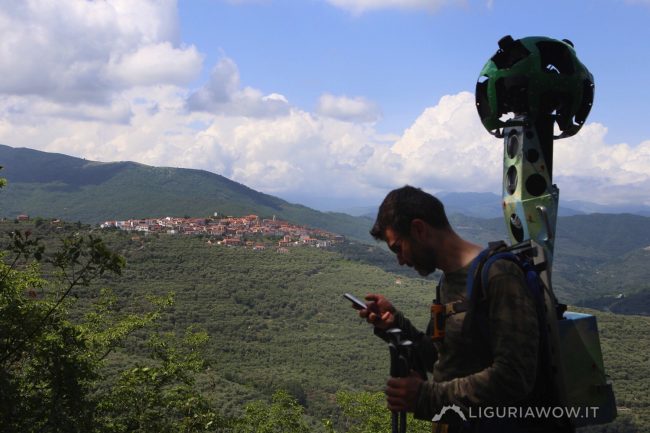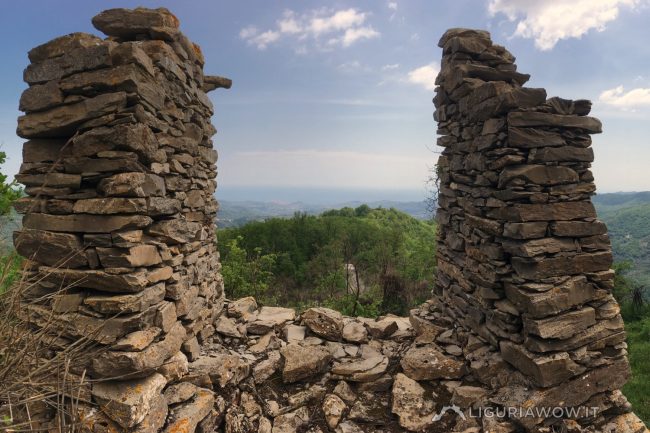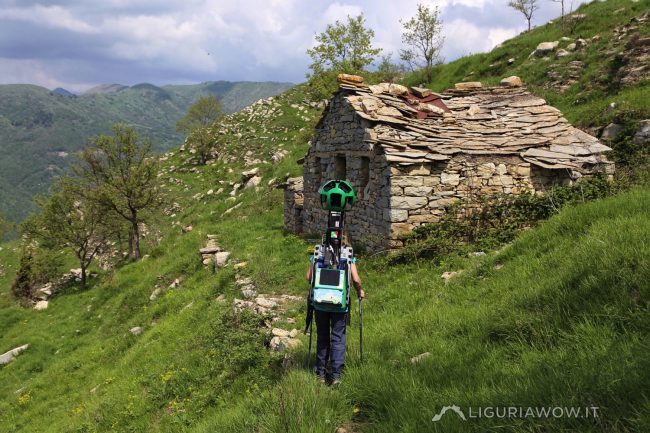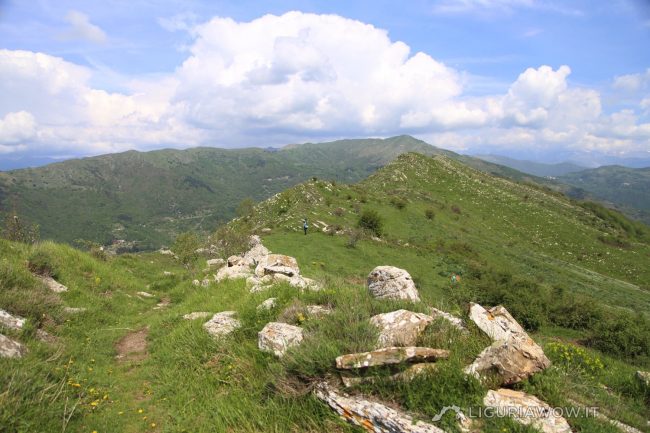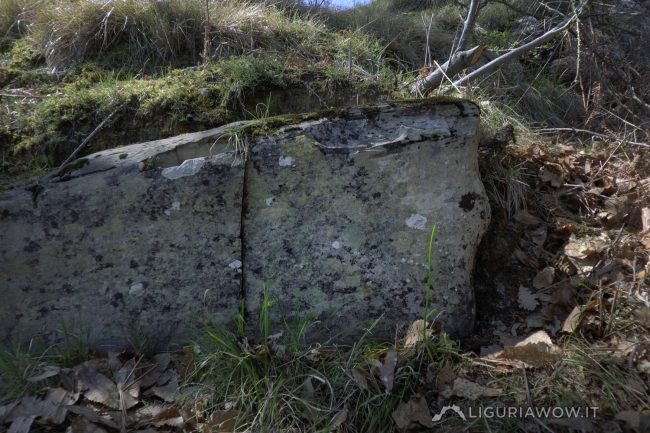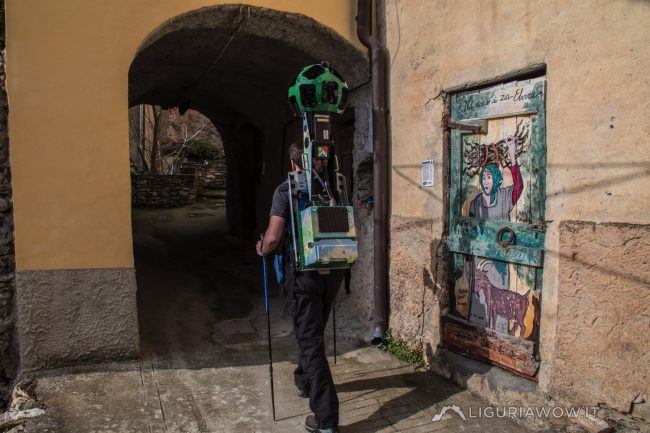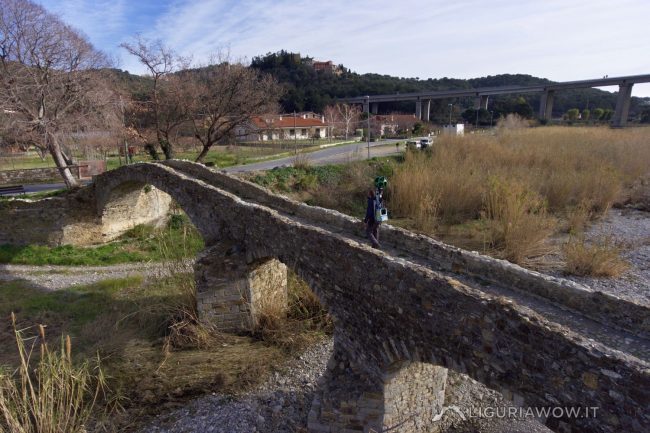The medieval wellspring of the Castrum Diani The Fontana del Melo is a medieval fount in Diano Castello, placed along the ancient mule track towards Diano San Pietro.The Castrum Diani was built on a promontory that was easy to defend but almost devoid of water sources. In order to guarantee a sufficient supply of water […]
Continue readingMore TagAuthor: Federico Nasi
Church of Santa Maria Maddalena in Lucinasco
Late medieval sanctuary hidden in the woods. The Sanctuary of Santa Maria Maddalena was founded in 1463 in a lonely place in the woods, on a main mule track that goes from Lucinasco to Monte Acquarone. The interior, frescoed, is composed of three naves and has no bell tower.Following the small trail beyond the building […]
Continue readingMore TagMonte Acquarone
An enigmatic peak still to be studied Monte Acquarone has been for centuries, perhaps millennia, a strategic point for control over the territory, rising between the Impero and Prino valleys. Crossed by the thousand-year-old Via Marenca, its summit is said to have hosted a pre-Roman castelliere and, later, a castle. The flat top, the presence […]
Continue readingMore TagCableways above Pantasina
Haymaking witnesses All the available land was exploited by shepherds and farmers based on altitude, slope, type of terrain, distance from the village and communication routes.The highest areas, more flat and subject to greater thermal gradients during the year, were dedicated to haymaking. To quickly transport the hay bales, called “beriui”, cableways were installed, some […]
Continue readingMore TagCasone of lovers
Romantic rural architecture Along the Via Marenca that follows the right ridge of the Impero Valley there are numerous examples of rural architecture, mainly “caselle”: small huts made with dry stones.During our trip with the Google Street View Trekker, not far from the summit of Monte Scuassi, we met a small “casone”, a type of […]
Continue readingMore TagVia Marenca
The thousand-year-old highway The Via Marenca is a route that connected Piedmont, France and the northern regions with the coast, allowing people to move and trade, primarily salt. A stretch of great strategic importance connected the villages of the Impero, Maro and Prelà valleys, reaching Oneglia, the landing point of merchant ships even before th […]
Continue readingMore TagStele of Tavole
Witness of an archaic culture The stele located a few meters away from the mule track, near the junction between the villages of Novelli and Revelli. This 3 m long stone resting on the ground has been identified by Dr. Gabriella Stabile Re as an anthropomorphic aniconic stele: it has human features but without incisions […]
Continue readingMore TagValloria
The village with painted doors Valloria is a medieval village of the “Vallis Aurea”, a name that derives from the color of olive oil, cultivated here for centuries. In the tiny alleys, called “carruggi”, peasant history marries art: around the nineties the Amici di Valloria association conceived an annual event in which several artists are […]
Continue readingMore Tag“Torre Pisana” mill
The tower with sea view On the ridge between the Valle Merula and the Gulf of Laigueglia, not far from Colla Micheri, there are the remains of a windmill from the 17th century, locally known as “Torre Pisana”. The tomb of Thor Heyerdahl lays a few steps away: the Norwegian anthropologist, explorer, director and writer, […]
Continue readingMore TagMedieval bridge of Andora
Also known as “Ponte Romano” The ancient bridge of Andora, known as “Roman Bridge”, has, in its current appearance, medieval origins. Made of ten arches, it connected the path that leads from the Castello dei Clavesana and Colla Micheri to the Chiappa Pass. Some features, such as the shape of the base of the pillars, […]
Continue readingMore Tag